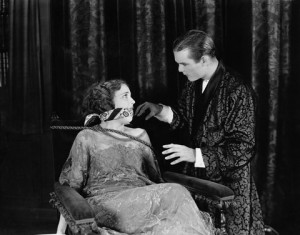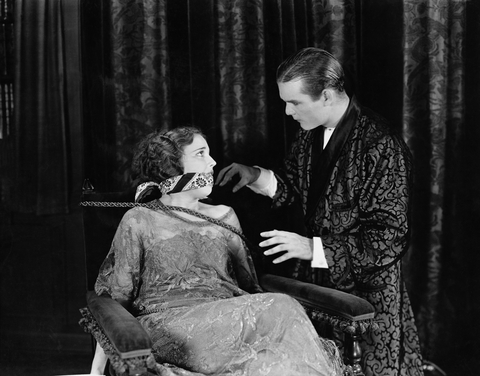
Lawyers for GlaxoSmithKline (GSK) recently referred to evidence presented by a well-respected expert, Dr. Joseph Glenmullen, as “junk science.” He was irrational enough to testify that there was a connection between suicidality (the likelihood of an individual completing suicide) and suicide attempts. The case is one where the widow of a lawyer sued GSK because her husband committed suicide shortly after taking a generic version of the antidepressant. “Since there is no way Dr. Glenmullen can establish causation based on suicide data, he relies instead on data on ‘suicidality’ and suicide attempts, which are not appropriate surrogates for reaching conclusions about suicide.”
The above was taken from a brief news report on Mad in America, “Paxil Manufacturer Calls Evidence of Suicide Risk ‘Junk Science.’” The article said GSK has routinely overstated the drug’s efficacy. A widely cited 2001 study funded by GSK known as “Study 329” was recently reanalyzed and these results then published in the British Medical Journal. The reanalysis showed that the original claim by Study 329 that Paxil (paroxetine) was safe and effective for adolescents was wrong. The September 16, 2015 BMJ press release also noted where GKS had been fined $3 billion ($1 billion criminal, $2 billion civil) for fraudulently promoting paroxetine, among other violations.
Using previously confidential documents, researchers reanalyzed the original data from Study 329 and found that paroxetine was not more effective than placebo in treating major depression in adolescents. They concluded: “paroxetine was ineffective and unsafe in this study.” And yet for fourteen years Study 329 has been cited as demonstrating the safety and efficacy of paroxetine to treat adolescent depression. The BMJ Editor-in-Chief said the publication of the reanalyzed data “set the record straight” while it also “shows the extent to which drug regulation is failing us.”
All antidepressant medications are required to include a warning similar to what follows, which was taken from the Medication Guide for Paxil:
PAXIL and other antidepressant medicines may increase suicidal thoughts or actions in some children, teenagers, or young adults within the first few months of treatment or when the dose is changed.
Psychiatrist Peter Breggin noted in “The Proven Dangers of Antidepressants” that the FDA warning cautioning about the risks of newer antidepressants (Prozac, Zoloft, Paxil, Luvox, Celexa, and Lexapro, as well as Wellbutrin, Effexor, Serzone, and Remeron) followed a public hearing with dozens of family members and victims testifying about suicide and violence committed by individuals taking these medications.
While stopping short of concluding the antidepressants definitely cause suicide, the FDA warned that they might do so in a small percentage of children and adults. In the debate over drug-induced suicide, little attention has been given to the FDA’s additional warning that certain behaviors are “known to be associated with these drugs,” including “anxiety, agitation, panic attacks, insomnia, irritability, hostility, impulsivity, akathisia (severe restlessness), hypomania, and mania.
Breggin was himself an expert witness in a 2012 court case that awarded $1.5 million medical malpractice verdict to a family of a man who committed suicide. He testified how antidepressants such as Paxil and Effexor could increase suicide risk in adults.
After reviewing extensive records and interviewing Mr. Mazella’s wife Janice, I concluded that Dr. Beals was negligent in reportedly prescribing Paxil for 10 years without seeing the patient, in failing to warn the patient and his wife about the serious risks associated with Paxil, in his doubling the Paxil dose and adding Zyprexa by telephone, and then in abandoning the patient during his decline. I also concluded that a hospital psychiatrist was negligent in not recognizing that Mr. Mazella was suffering from adverse drug effects and in discharging him without proper follow up two weeks before his death.
In his discussion on “The Proven Dangers of Antidepressants” linked above, Breggin also commented how there has been little attention to the additional FDA warning that additional behaviors are known to be associated with antidepressants, including “anxiety, agitation, panic attacks, insomnia, irritability, hostility, impulsivity, akathisia (severe restlessness), hypomania, and mania.” He noted how he has repeatedly documented how the stimulation and activation profile of antidepressants can lead to out-of-control behavior, including violence.
In his article, “Antidepressant-Induced Mania,” psychologist Philip Hickey described how circular reasoning about activation from antidepressants becomes evidence of “an underlying latent bipolar disorder.” He indicated that psychiatry retrospectively applies their explanation as follows: “Before the individual showed any signs of mania, he must have had bipolar disorder because he became manic at a later date.” The hypothesis cannot be verified because the occurrence of a manic or hypomanic episode is the primary criterion for the bipolar diagnosis.
Yet there has been recent evidence that manic/hypomanic episodes can be caused by the use of antidepressant medications. Hickey reviewed a Psychiatric Times article written by Ross Baldessarini that reported on a meta-analysis that he and his colleagues did on antidepressant-associated mood-switching. Bipolar disorder is often seen as beginning with at least one episode of major depression, followed by an episode of mania or hypomania. This ‘switching’ of mood may occur during treatment with an antidepressant or other mood-elevating agent. And it is especially common among juveniles and young adults using an antidepressant for a mood disorder (depression or anxiety) or a stimulant for attention. “Such pathological shifts of mood and behavior may represent adverse drug actions or a manifestation of undiagnosed bipolar disorder.”
Hickey noted that Baldessarini et al. found that manic or hypomanic episodes were 5.6 times more common per year for individuals diagnosed with major depression who were taking antidepressants and others with the same diagnosis who were not taking them. After citing several quotations from the Baldessarini et al. study and the Psychiatric Times article, Hickey said: “What the authors are pointing out here is that antidepressants are clearly implicated in the ‘excess’ incidents of mania/hypomania, and they have even raised the question of a direct causal link.”
Baldessarini even suggested that when antidepressant-related manic episodes occur, the continued use of antidepressants might contribute to recurrent manic episodes. Although it is widely assumed that mood-stabilizing drugs are highly effective in preventing antidepressant-associated mood switching, it is not conclusively proven to be true. “Moreover, there is very limited evidence that prolonged antidepressant treatment provides substantial protection against recurrences of bipolar depression and that it might contribute to emotional instability or rapid cycling.”
When you add the research of Irving Kirsch, who has shown that antidepressants have little or no therapeutic effect at all (See “Do No Harm with Antidepressants”), we are left with a class of drugs that are no more effective than the placebos used in their clinical trials. As we saw here, they could also activate what they are taken to prevent or stabilize—depressive symptoms such as suicidality. Moreover, their use could also lead to mania or hypomania and thus elevate the initial diagnosis of major depression to the more serious one of bipolar disorder. And the icing on the cake is that if antidepressants are continued, they may contribute to further emotional instability or rapid cycling. This is a cycle of what Peter Breggin called iatrogenic helplessness generated by antidepressants. Here is his description in Brain-Disabling Treatments in Psychiatry:
The concept of iatrogenic helplessness and denial includes the patient’s and the doctor’s mutual denial of the damaging impact of the treatment as well as their mutual denial of the damaging impact of the patient’s underlying psychological and situational problems. Overall, iatrogenic helplessness and denial accounts for the frequency with which psychiatry has been able utilize brain-damaging technologies, such as electro-shock and psychosurgery, as well as toxic medications.
Iatrogenic refers to something induced inadvertently by a physician, medical treatment or diagnostic procedures. Breggin has been challenging the iatrogenic nature of psychiatric treatment for essentially his entire professional career as a psychiatrist. In 1983 he wrote in The Iatrogenics Handbook that iatrogenic denial involved the infliction of brain damage and dysfunction upon the patient to encourage them to deny both the existence of his problems and the iatrogenic brain damage. “I developed the brain-disabling hypothesis which states that all the major psychiatric treatments disable the normal brain rendering the individual more helpless and hence easier to manage or to ignore.”





